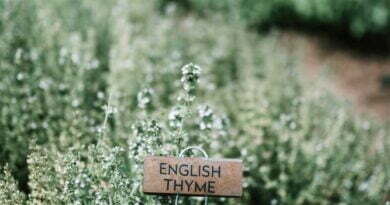A Growing Guide for Squash: Health Benefits and Delicious Meal Ideas
Welcome to the wonderful world of allotment gardening, where you can cultivate your own delicious and nutritious vegetables. Among the wide array of vegetables you can grow, squash stands out as a versatile and rewarding choice for your allotment garden. From vibrant yellow courgettes (zucchini) to hearty winter varieties like butternut squash, the possibilities with squash are endless. In this comprehensive growing guide, we will delve into the process of successfully cultivating squash, explore its health benefits, and provide mouthwatering meal ideas to inspire your culinary creations. Get ready to embark on a journey of nurturing squash plants and enjoying the bountiful rewards they bring.
Growing Squash:
Selecting Squash Varieties: Choose from a variety of squash options, including courgettes (zucchini), yellow squash, butternut squash, acorn squash, and spaghetti squash. Consider the size, flavour, and growing requirements of each variety when making your selection.
Soil Preparation:
Squash thrives in well-drained soil with a pH between 6 and 7. Improve soil fertility and drainage by incorporating compost or well-rotted manure. Clear the area of weeds and loosen the soil before planting.
Planting Squash:
Sow squash seeds directly into the garden bed once the soil has warmed up and all risk of frost has passed. Create small mounds or hills spaced about 60-90cm (2-3 feet) apart to improve drainage. Plant the seeds at a depth of 2.5-5cm (1-2 inches), following the spacing guidelines provided for the specific variety. Water the seeds gently but thoroughly.
Sunlight and Watering:
Squash plants thrive in full sun, requiring a minimum of 6-8 hours of direct sunlight per day. Adequate watering is crucial, especially during dry periods. Water deeply at the base of the plants, ensuring the soil is consistently moist but not waterlogged.
Fertilisation and Mulching:
Apply a balanced organic fertiliser at planting and again when the plants begin to flower. Mulch around the base of the plants with organic matter, such as straw or compost, to retain moisture, suppress weeds, and regulate soil temperature.
Pest and Disease Management:
Regularly monitor your squash plants for signs of pests, such as aphids or squash vine borers. Handpick and remove any pests you find. Implement organic pest control methods if necessary, such as using insecticidal soaps or introducing beneficial insects like ladybirds or lacewings. Proper spacing, good air circulation, and avoiding overhead watering can help prevent diseases like powdery mildew.
Harvesting Squash:
Harvest summer squash when they are young and tender, typically when they are 15-20cm (6-8 inches) long. Winter squash should be harvested when the skin is hard and cannot be easily punctured with a fingernail. Cut the squash from the vine using a sharp knife, leaving a short stem attached. Handle the harvested squash carefully to avoid any bruising or damage.

Health Benefits of Squash:
Rich in Nutrients: Squash is low in calories and high in essential nutrients, including vitamins A, C, and E, as well as minerals like potassium and magnesium. These nutrients contribute to healthy vision, strong immunity, and overall well-being.
Antioxidant Powerhouse: The vibrant colours of squash indicate the presence of beneficial antioxidants, such as beta-carotene and lutein. These compounds help protect the body against oxidative stress and reduce the risk of chronic diseases.
Digestive Health: Squash is an excellent source of dietary fibre, which aids in digestion, promotes bowel regularity, and supports a healthy gut.
Meal Ideas:
Roasted Butternut Squash Soup:
Roast cubed butternut squash with olive oil, salt, and pepper until tender. Puree the roasted squash with vegetable stock, sautéed onions, garlic, and a touch of cream for a comforting and nourishing soup.
Grilled Courgettes (Zucchini):
Slice courgettes lengthwise, brush with olive oil, sprinkle with herbs, and grill until tender and lightly charred. Serve as a tasty side dish or as a component of summer salads.
Stuffed Acorn Squash:
Halve acorn squash, scoop out the seeds, and place cut-side down on a baking sheet. Bake until tender. In a separate pan, sauté a mixture of onions, garlic, quinoa, and vegetables. Fill the squash halves with the quinoa mixture, top with cheese, and bake until the filling is heated through and the cheese is melted.
With the knowledge and insights gained, you are well-prepared to embark on your squash-growing adventure. From selecting the right varieties and preparing the soil to tending to your plants, you now have the tools to cultivate a thriving squash harvest. And let’s not forget the culinary delights that await! From soups to grilled dishes and stuffed creations, the versatile nature of squash will provide endless inspiration for delicious meals. Embrace the joy of growing and cooking with squash, and savor the flavors of this nutritious and delightful vegetable. Happy growing and happy eating!




